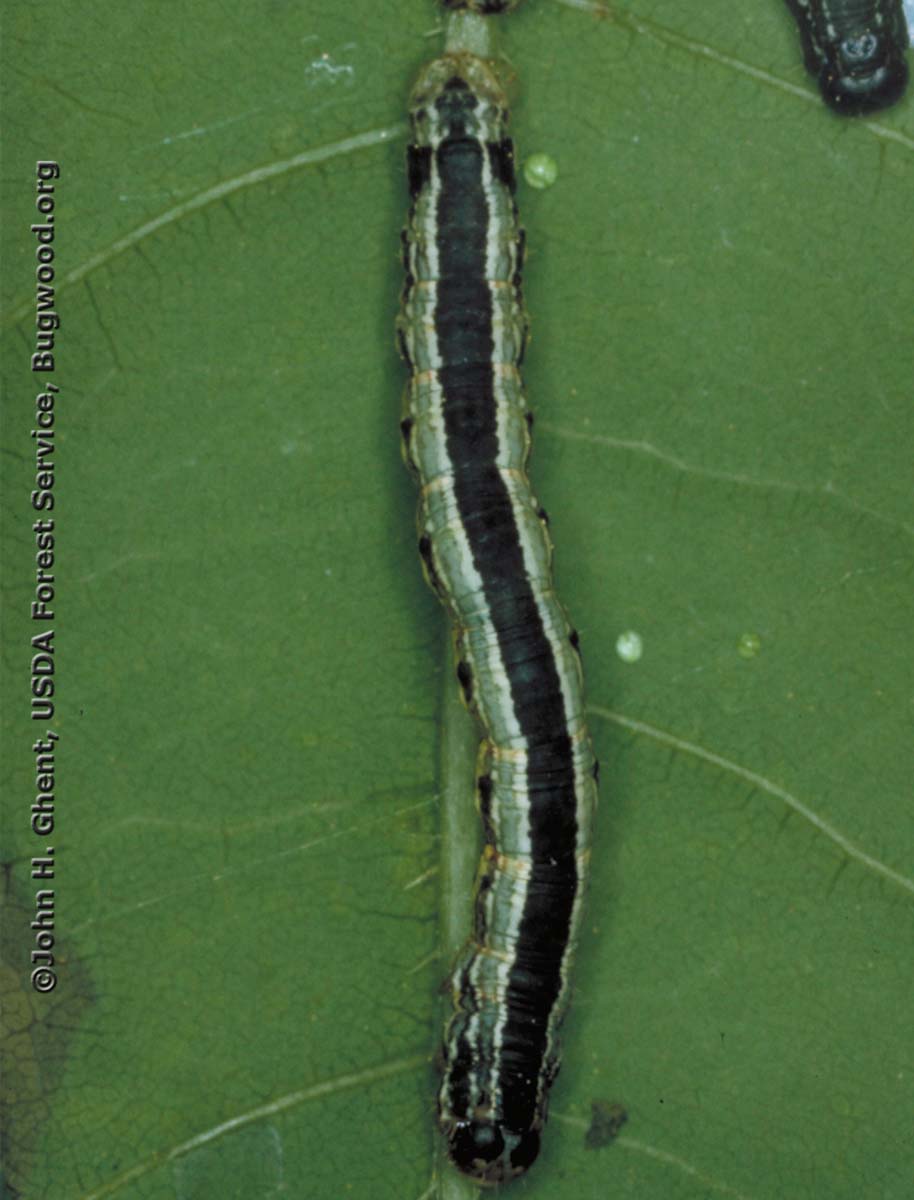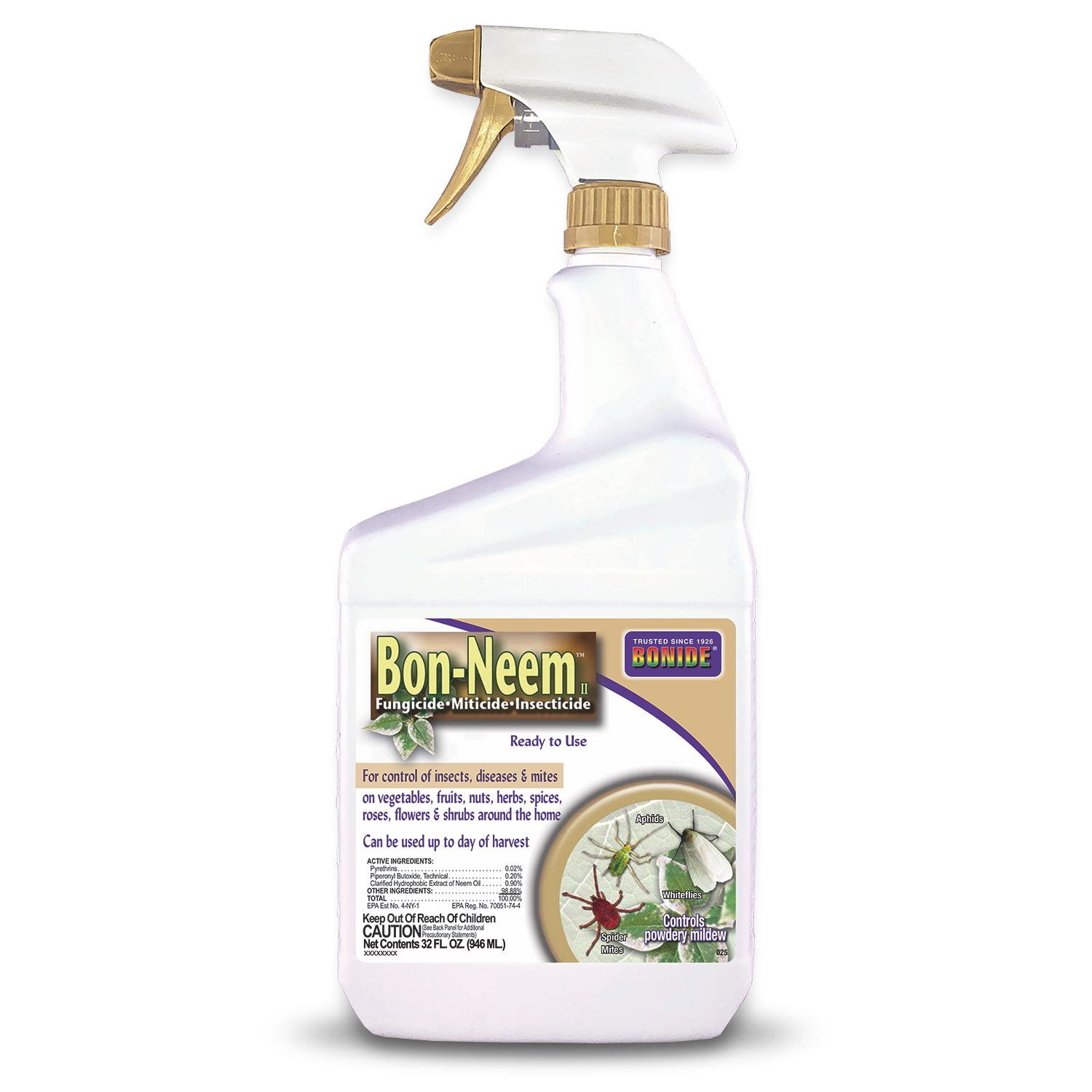
Also called inchworms for their looping motion, these 1 inch long pests are found in all but the southernmost parts of the country. Spring cankerworm moths show up in spring, fall cankerworm moths in autumn when weather turns cold. The caterpillars of both types feed in spring, moving from tree to tree on silken strands. Spring canker-worms are green, brown, or black with colored stripes, while the fall type is brown on top and green below, with three slender white stripes.
Target: Fruit and shade trees.
Damage: Leaves are chewed, but no webbing is visible. Trees may be defoliated during a bad infestation. Young fruit may have holes that heal over into scabby patches.
Life cycle: Wingless female moths crawl up tree trunks and lay eggs. The spring species lays clusters of oval, purplish eggs beneath the bark; the fall type deposits neat tiers of gray, flower-pot-shaped eggs on twigs. The eggs hatch when trees leaf out in spring; the larvae feed for about a month, then lower themselves by silken threads and form underground pupae. There is one generation a year.
Notes: Heavy infestations usually occur every 7 years or so. Repeated defoliation weakens a tree.













